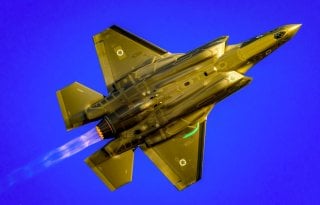To Destroy Hamas, the Regime in Iran Must Fall
For any success in destroying Hamas' capabilities to endure, the Iranian regime must also be eliminated.
Whether or not Iran played a direct role in planning and executing Hamas’ brutal assault on Israel doesn’t really matter. What does matter is Iran’s indispensable, long-term role in building Hamas’ capability to do what it did. In the near term, Israel will settle for nothing less than the physical elimination of Hamas as a military, administrative, financial, and organizational entity in Gaza. There can be no return to the status quo ante. But for any success in destroying Hamas’ capabilities to endure, the Iranian regime must also be eliminated.
The Iran Challenge
The Islamic Republic is a vile regime that shares the annihilationist ideology of Hamas. It is detested by large numbers of Iranians. Their resentment periodically erupts into widespread opposition, which is brutally repressed by methods reminiscent of many other tyrannies.
This cycle will probably repeat itself in the future. Still, another round of demonstrations by anti-theocrats wearing green shirts or by women discarding their hijabs is unlikely to produce a different outcome. Nor is economic strangulation on the horizon as long as Russia, China, others in the Global South, and even Western democracies worry first of all (understandably) about their own energy security and economic well-being and, therefore, fail even to enforce all the sanctions they have already endorsed.
Nor is there much enthusiasm for the kind of military coercion that ultimately ended vile regimes in Afghanistan (temporarily) and Iraq.
How to Rid the World of the Islamic Republic
So, if the ayatollahs in Iran won’t change their aspirations, what can force them to leave the stage?
There are not many options, but one possible vulnerability merits attention: Iran’s demographic makeup. Only about 50-60% of Iran’s population consists of Shi’ite Persians. Even in this, the most responsive audience to demagogic appeals to Iran’s historical greatness, there is widespread disaffection.
This, after all, was the core that provided most of the country’s modernizing elites before the Islamic Revolution. But on the country’s periphery, there are large non-Persian and/or non-Shi’ite minorities – Azeris in the north toward the Caucasus, Kurds in the mid-west, Arabs at the head of the Gulf, Baluch in the east, and several others. Many of these are alienated from, if not actively hostile to, the regime, and most are accessible from other countries or the sea.
Foreign actors threatened by Iranian behavior can support demands by these populations, if not for secession or disintegration of the country (which might well encourage Persians to rally around the flag), then certainly for a government more tolerant and respectful of their cultural, linguistic and economic needs – that is, for something similar to the autonomous status of Kurdistan in Iraq. The potential here is illustrated by the outraged response to the murder of Mahsa Amini, which spread throughout the entire country but was most pronounced in her native Kurdistan.
Therefore, foreign parties can begin to erode the foundations of the regime, at first with non-violent means -- in the form of funds, logistics and communications, information technology, and diplomatic endorsement.
However, the regime would certainly respond (as it has done in the past) with a brutal crackdown, so foreign parties should not set out on this path unless they are committed in advance not to abandon those advocating the pluralization/decentralization/democratization of the country when the going gets tough or short-term interests change – as happened on more than one occasion to the Kurds in Iraq. This implies a willingness to escalate to military support and other active measures, at least in the form of instruction, individual and unit weaponry and operational intelligence, if not direct intervention. Failure to follow through on that would be worse, both politically and morally, than failure to assume the challenge in the first place.
A Broad Effort Needed
Israel lacks the resources to take such a geostrategic gamble on its own. But there are many others who are also threatened by the Iranian regime’s aspirations and capabilities. These include the partners in the Abraham Accords, the putative partners in the tripartite accord promoted by the Biden Administration, and other informal allies in the region and elsewhere. Israel will find it difficult to convince the United States to take the indispensable lead in a campaign for regime change in Iran and to influence other key components to join in. Its chances would improve if it could persuade potential partners that it is also truly prepared, after Gaza, to act constructively on the Palestinian logjam.
But for that to happen, Israel may well need to undergo its own regime change. In other words, when this stage of the confrontation is over, Israel will need to change its current government, change its government’s policies, and allow a true test of the argument made by critics of Israeli actions in Gaza that not all Palestinians are Hamas supporters or sympathizers.
Mark A. Heller is a senior researcher at the Institute for National Security Studies and a Non-Resident Scholar at the Middle East Institute in Washington, DC.
Sumit Ganguly is a Distinguished Professor of Political Science at Indiana University, Bloomington, and a Visiting Fellow at the Hoover Institution at Stanford University.
Image Credit: Creative Commons.

